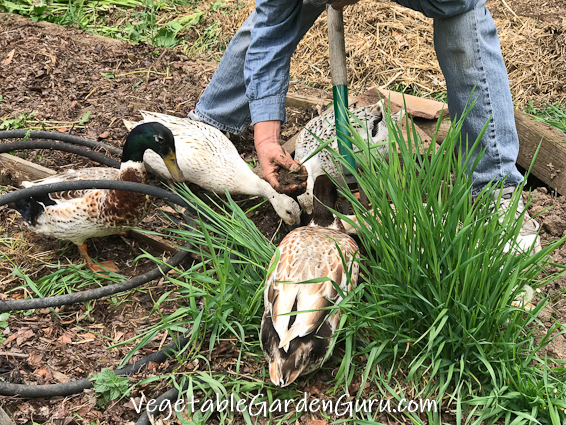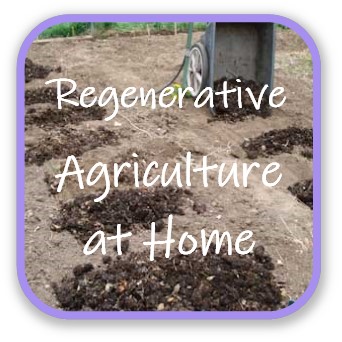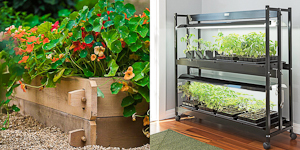- Home
- What Is Regenerative Agriculture?
- Regenerative Agriculture Practices
Regenerative Agriculture Practices
Regenerative agriculture practices are proving themselves to be not only sustainable, but capable of producing the most nutrient-dense food possible, a quality that has been lost under industrialized agriculture.
 Adding Animals to a Farm or Garden is A Helpful Regenerative Agriculture Practice
Adding Animals to a Farm or Garden is A Helpful Regenerative Agriculture PracticeThis is because regenerative agriculture practices work with nature's ecosystems, rather than trying to dominate and override them.
By working to optimize healthy soil ecosystem function, we can grow food without chemicals, as indigenous people did for millennia. And it can be scaled up, too - but at a human scale that respects farmers and their land,
Eight Regenerative Agriculture Practices
That Work On Both Farms and Gardens
Regenerative Agriculture Practice #1
Don't till or do other major soil disruption.
Tilling destroys the soil ecosystem and removes plants from their natural inter-relationships with the greater soil food web, leading to lowered plant health, pest resistance and nutrient-density.
Regenerative Agriculture Practice #2
Maintain a diversity of plants.
Use interplanting/polyculture, cover cropping, crop rotations, polyculture pasture management, hedgerows, and companion planting to maximize plant diversity. High diversity maintained above ground translates into high (and healthy) diversity below ground, which helps boost nutrient density.
Regenerative Agriculture Practice #3
Keep the soil covered at all times.
Living plants protect the soil and its life from intense sunlight, and also pump carbon underground. Use of mulch or compost also protects, but doesn't sequester carbon.
Regenerative Agriculture Practice #4
Apply rock dusts and/or ocean minerals according to detailed soil test results. This provides the minerals needed by plants, but only works when healthy soil ecology is present. See the How to Make Organic Fertilizer page for details.
Regenerative Agriculture Practice #5
Use microbial teas and ferments.
These miraculous microbrews boost the levels of symbiotic microbes, which are necessary in order for plants to access soil minerals. See Actively Aerated Compost Tea for instructions.
Regenerative Agriculture Practice #6
Provide food and habitat for pollinators.
Pollinators are necessary for the maintenance of almost all food crops, and chemical agriculture has decimated their populations. Plant native wildflowers and provide undisturbed ground and brush piles. Learn more at the Pollinators page.
Regenerative Agriculture Practice #7
Strive for balance within larger ecosystem rather than dominance.
When an ecosystem is functioning and in balance, no single species (weed, insect) becomes a major problem. Learn to appreciate the whole, rather than over-controlling a small portion. Read One Straw Revolution by Masanobu Fukuoka for a deeper appreciation of the beauty of this. (Most likely available at your library.)
Regenerative Agriculture Practice #8
Incorporate animals into the system with planned rotational grazing.
Plants are actually stimulated to grow more and pump more carbon underground when they are occasionally lightly grazed. Farms may rotate cattle or chickens (in a "chicken tractor") across a piece of ground. In the vegetable garden, keeping chickens or ducks and letting them graze in the off season, or occasionally, briefly (and supervised!) during the growing season, can benefit both plants and soil.
Regenerative Agriculture: We Can Do This
The promise of the so-called "Green Revolution" that began in the 1960s and 70s has turned out to be a toxic nightmare for both people and the planet, with devastating consequences. Big Ag make billions, and their toxic legacy is widely accepted as "normal" and "necessary".
Regenerative agriculture practices are capable of turning this around. They hold the promise of reversing global warming, putting deep nutrition back into food, and putting profit and hope back into the hands of farmers. It all may sound idealistic or naive, but increasing numbers of farmers around the world are proving that regenerative agriculture works.
We can do this.
Want to Learn More?
Help share the skills and spread the joy
of organic, nutrient-dense vegetable gardening, and please...
~ Like us on Facebook ~
Thank you... and have fun in your garden!
Affiliate Disclaimer
This website contains affiliate links to a few quality products I can genuinely recommend. I am here to serve you, not to sell you, and I do not write reviews for income or recommend anything I would not use myself. If you make a purchase using an affiliate link here, I may earn a commission but this will not affect your price. My participation in these programs allows me to earn money that helps support this site. If you have comments, questions or concerns about the affiliate or advertising programs, please Contact Me.Contact Us Page





